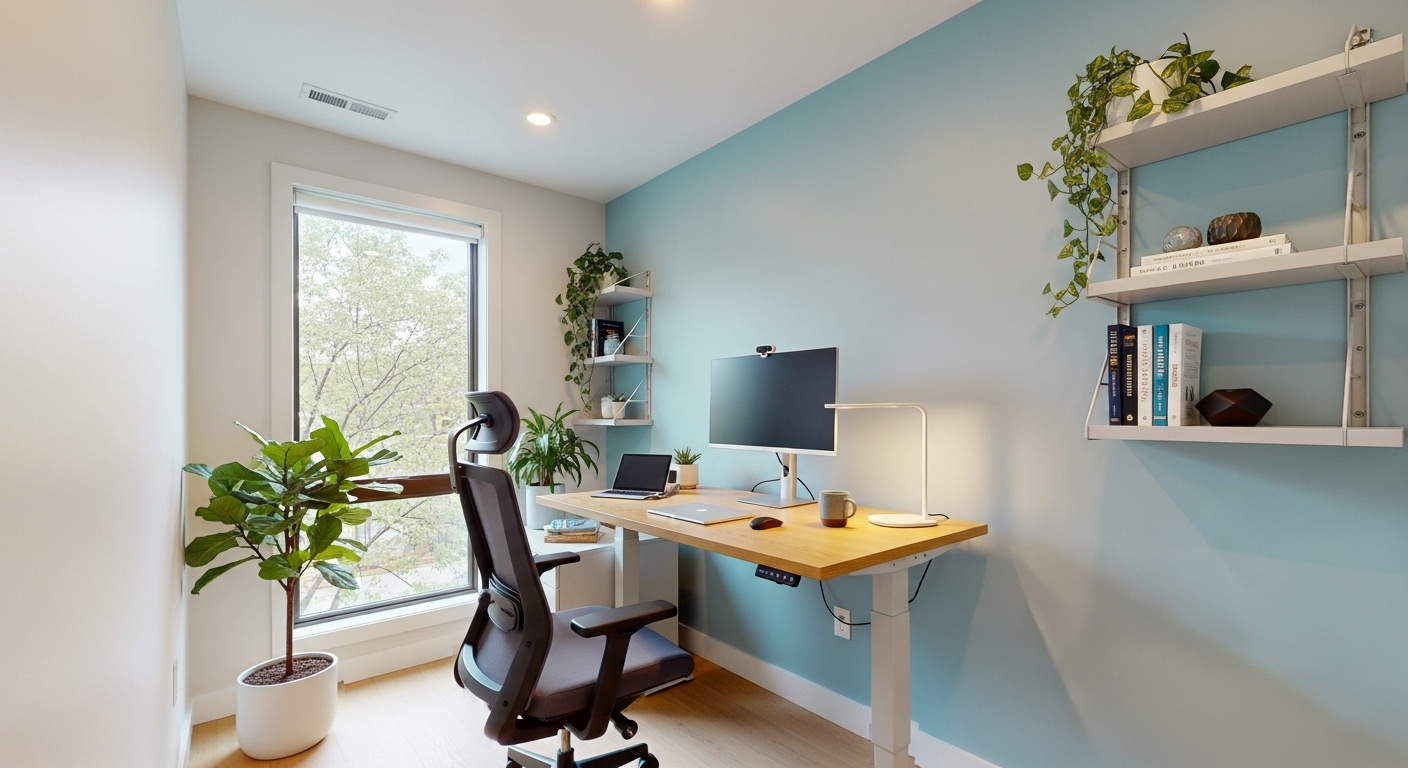Coworking spaces have transformed from a niche option for freelancers into a mainstream pillar of the modern professional landscape. They offer an enticing blend of flexibility, community, and amenities that traditional offices often lack. However, this dynamic environment presents a unique challenge: balancing the vibrant, collaborative energy with the need for deep, focused work. Many professionals find themselves struggling to filter out distractions and harness the full productivity potential of these shared hubs. The key isn’t to retreat from the community but to build a personalized system for navigating it. This article provides a practical toolkit of strategies designed to help you master your environment, structure your day, and protect your focus. By architecting your workflow with intention, you can transform any coworking space from a potential source of distraction into your personal high-output hub, achieving peak performance while still enjoying the benefits of a connected professional ecosystem.
1. The Foundational Mindset: Architecting Your ‘Third Space’
Before you even step into the coworking space, the most critical work begins in your mind. Success in a shared environment hinges on a psychological shift—viewing the space not merely as a place to work, but as a deliberate ‘third space’ distinct from home (the first space) and a traditional corporate office (the second). This mental reframing requires intention. Start each day by defining a clear mission. Ask yourself: What are the one to three critical tasks that will make today a success? Writing these down creates a cognitive anchor, a North Star that guides your actions and helps you deflect lower-priority distractions. This isn’t just about a to-do list; it’s about setting a powerful intention that primes your brain for focus. Furthermore, establish rituals that bookend your workday. A specific ‘commute’—even if it’s just a ten-minute walk before and after your session—helps create a mental separation between work and personal life. Similarly, a ‘shutdown’ ritual, where you review your accomplishments and plan the next day’s mission, signals to your brain that the workday is complete. This psychological architecture is the foundation upon which all other productivity techniques are built. Without it, even the best noise-canceling headphones or time-management apps will fall short. By treating your coworking space as a purpose-built arena for high-value output, you proactively design your focus instead of reactively defending it.
2. Mastering Your Micro-Environment: The Art of Desk Curation
Your immediate physical surroundings have a profound impact on your ability to concentrate. In a coworking space, you may not control the overall floor plan, but you have absolute dominion over your micro-environment: your desk. Mastering this small patch of real estate is a crucial lever for productivity. The first step is strategic selection. Most coworking spaces offer a variety of zones; learn their nuances. Is there a designated quiet area for heads-down work? Are there phone booths for calls? Align your daily tasks with the appropriate zone. If you need to write a detailed report, don’t camp out next to the espresso machine. Once you’ve chosen your spot, curate it for focus. The principle is simple: everything on your desk should serve your immediate task. This means investing in a ‘focus toolkit’ that travels with you. Chief among these tools are high-quality, noise-canceling headphones. They are the single most effective barrier against ambient noise and serve as a universal ‘do not disturb’ sign. Consider a portable second monitor to create a more ergonomic and efficient digital workspace, reducing the need to constantly switch between windows. Keep your physical space decluttered. A tidy desk with only your laptop, notebook, and water bottle sends a powerful signal to your brain that it’s time for focused work. This curated micro-environment minimizes external sensory input, freeing up valuable cognitive resources to be dedicated to the task at hand.
3. Time-Blocking and Task Batching: Imposing Structure on Flexibility
The inherent flexibility of a coworking schedule can be both a blessing and a curse. Without the rigid structure of a 9-to-5 corporate day, it’s easy for time to become amorphous and for distractions to creep in. The solution is to impose your own structure through proven time management techniques like time-blocking and task batching. Time-blocking involves dividing your day into specific blocks of time, with each block dedicated to a single task or group of related tasks. Instead of a simple to-do list, you assign every task a home on your calendar. For example, 9:00 AM – 11:00 AM might be blocked for ‘Deep Work: Project Proposal,’ while 11:00 AM – 11:30 AM is for ‘Respond to Emails.’ This method combats multitasking and decision fatigue, as you already know what you should be working on at any given moment. Take this a step further with task batching. Group similar activities together within your time blocks. For instance, batch all your communication—emails, Slack messages, phone calls—into one or two specific blocks per day. This prevents the constant context-switching that drains mental energy. Similarly, batch administrative tasks like invoicing or scheduling. The Pomodoro Technique, working in focused 25-minute sprints followed by a 5-minute break, can be layered on top of time-blocking to maintain high levels of concentration within each block. By proactively structuring your day, you create a workflow that respects your brain’s limitations and leverages its strengths, turning the freedom of a coworking space into a strategic advantage.
4. Navigating the Social Landscape: Strategic Collaboration and Networking
One of the primary draws of a coworking space is the built-in community. However, this same asset can become a significant productivity drain if not managed strategically. The goal is to engage with the community on your own terms, transforming potential interruptions into valuable, scheduled interactions. Be intentional about your social time. Instead of letting random conversations derail your deep work sessions, schedule time for networking. Use the natural break points in your day—grabbing a coffee, eating lunch, or packing up at the end of the day—as designated opportunities to connect with fellow members. Participating in official community events is another excellent way to build relationships in a structured setting. When you are in a focus block, you must protect it. This is where clear, non-verbal cues become essential. As mentioned, wearing headphones is a powerful signal. You can also position your desk facing a wall to reduce visual distractions and make yourself less approachable for casual chats. If someone does interrupt you, have a polite but firm script ready. Something like, “Hey, great to see you! I’m in the middle of a deep focus session right now, but can I catch you at lunch in about an hour?” This acknowledges the person while reinforcing your boundaries. By being proactive and intentional, you can reap the significant benefits of a professional network without sacrificing the focused time your most important work requires.
5. The Digital Toolkit: Essential Apps and Tech for Shared Spaces
Your physical toolkit is crucial, but an equally important digital toolkit can amplify your focus and streamline your workflow in a shared environment. Technology, when used intentionally, can build a powerful fortress around your attention. Start with distraction-blocking software. Applications like Freedom, Cold Turkey, or Forest allow you to temporarily block access to distracting websites and apps across all your devices, creating an enforced deep work session. This removes the temptation and willpower drain of constantly fighting digital lures. Next, master your communication platforms. Use the status features on tools like Slack and Microsoft Teams to signal your availability. A status like “Deep Work until 2 PM – responses will be delayed” sets clear expectations with colleagues and clients, reducing the pressure for an immediate reply. Cloud storage and collaboration tools like Google Workspace, Notion, or Dropbox are non-negotiable. They ensure your work is accessible and synchronized, allowing you to move seamlessly between a dedicated desk, a common area, or a meeting room without losing a beat. Finally, consider a reliable password manager and a VPN. A password manager saves cognitive load by securely storing your credentials, while a VPN is essential for protecting your data on shared Wi-Fi networks. This curated digital stack doesn’t just add convenience; it reduces friction, automates discipline, and secures your work, allowing you to dedicate your full mental capacity to what truly matters.
6. Energizing Your Day: The Power of Strategic Breaks
Sustained productivity isn’t about chaining yourself to a desk for eight hours straight. It’s about managing your energy, and strategic breaks are the most powerful tool in your energy management arsenal. In a coworking environment, you have access to a variety of spaces designed specifically for this purpose. It’s critical to step away from your workstation during breaks. Physically removing yourself from your desk helps create a more effective mental reset. Instead of scrolling through social media at your desk, take a five-minute walk around the common area or step outside for fresh air. Research consistently shows that even short bursts of physical activity can boost cognitive function and creativity. Leverage the amenities your space offers. If there’s a wellness room, use it for a brief meditation session to clear your head. If there’s a kitchen, use the time making tea or coffee to let your mind wander—this is often when unexpected insights occur. It’s also vital to hydrate and fuel your body properly. Dehydration is a known cause of fatigue and concentration loss. Keep a water bottle on your desk and refill it regularly. Avoid relying solely on caffeine and sugary snacks, which lead to energy crashes. By thoughtfully integrating these restorative breaks into your time-blocked schedule, you create a sustainable rhythm for your workday. You’ll return to your tasks feeling refreshed and refocused, enabling you to produce higher-quality work over the long haul and avoid burnout.
Conclusion
The allure of the coworking space lies in its promise of a dynamic, flexible, and community-driven work life. Yet, unlocking its full potential requires more than just showing up with a laptop. True productivity in a shared environment is an active, intentional process—a skill to be cultivated. It’s about building a personalized toolkit that addresses every layer of your workday, from the foundational mindset you bring in the morning to the physical and digital environments you curate around you. By architecting your ‘third space’ with purpose, mastering your desk, imposing a structure on your time, and navigating the social landscape strategically, you take control of your focus. Integrating the right digital apps and, crucially, embracing the restorative power of strategic breaks completes the system. These strategies work in concert to create a robust framework for high performance. They allow you to filter out the noise and harness the energy of your surroundings, achieving the deep work necessary for meaningful output while still benefiting from the collaborative spirit that makes coworking so compelling. Ultimately, a coworking space is a powerful tool; this toolkit gives you the instructions to wield it with mastery.





